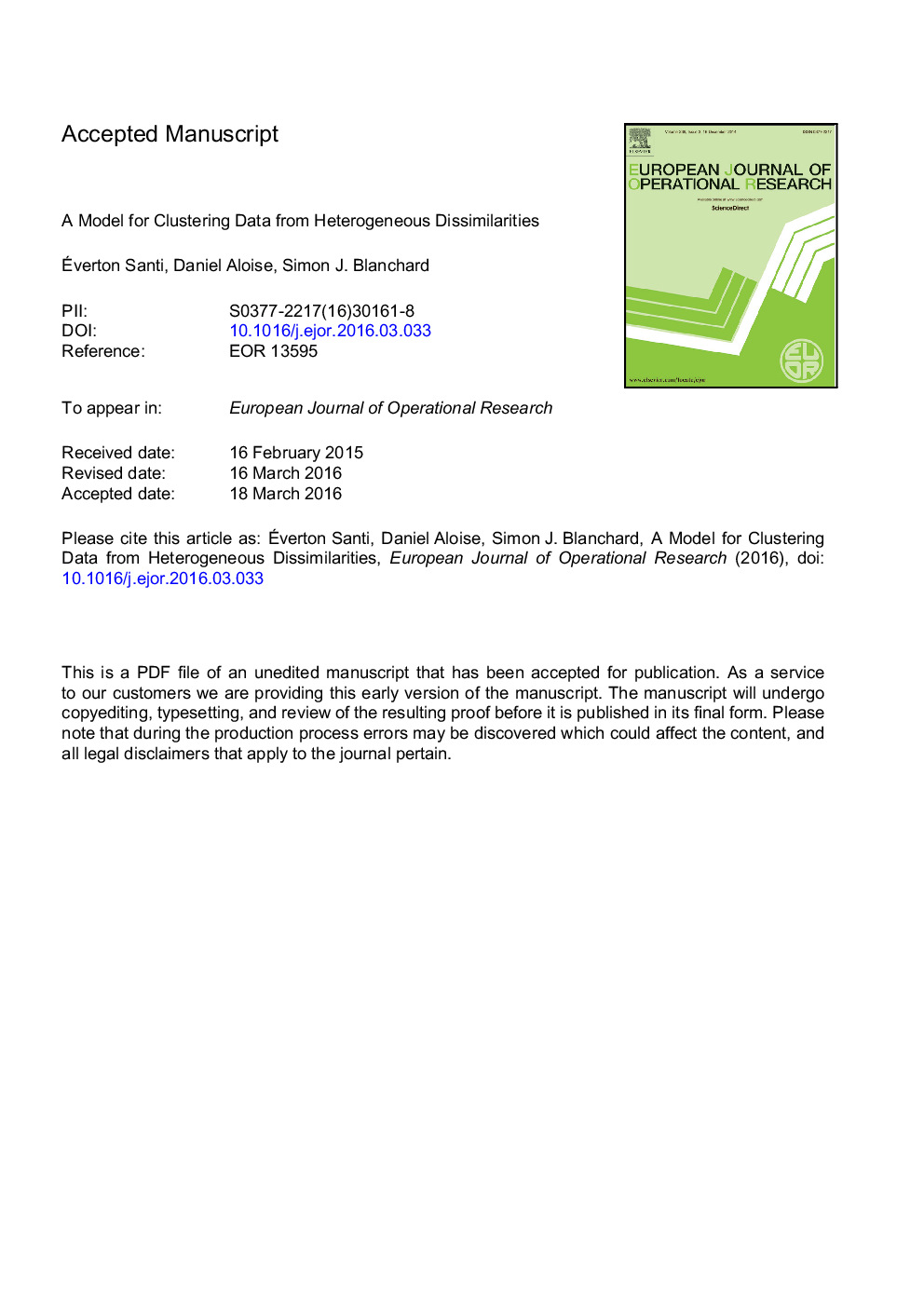| Article ID | Journal | Published Year | Pages | File Type |
|---|---|---|---|---|
| 6895544 | European Journal of Operational Research | 2016 | 35 Pages |
Abstract
Clustering algorithms partition a set of n objects into p groups (called clusters), such that objects assigned to the same groups are homogeneous according to some criteria. To derive these clusters, the data input required is often a single n à n dissimilarity matrix. Yet for many applications, more than one instance of the dissimilarity matrix is available and so to conform to model requirements, it is common practice to aggregate (e.g., sum up, average) the matrices. This aggregation practice results in clustering solutions that mask the true nature of the original data. In this paper we introduce a clustering model which, to handle the heterogeneity, uses all available dissimilarity matrices and identifies for groups of individuals clustering objects in a similar way. The model is a nonconvex problem and difficult to solve exactly, and we thus introduce a Variable Neighborhood Search heuristic to provide solutions efficiently. Computational experiments and an empirical application to perception of chocolate candy show that the heuristic algorithm is efficient and that the proposed model is suited for recovering heterogeneous data. Implications for clustering researchers are discussed.
Related Topics
Physical Sciences and Engineering
Computer Science
Computer Science (General)
Authors
Ãverton Santi, Daniel Aloise, Simon J. Blanchard,
